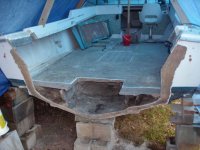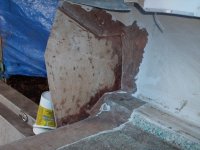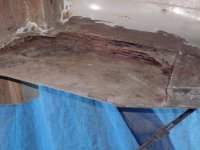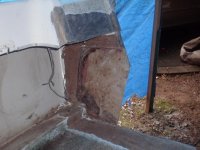Joker2
Junior Member
Well I finally got another day to rip into this transom, did the messy part grinding back all the old glass, made the template and cut the wood. I'm not sure how I did, did I grind back far enough? I'm not quitesure how I am going to put the bilge area back together, It was cracked when I started to take it out so I wasn't too carefull with my cuts ( I think that was a big mistake )I kind of destroyed it. Should I repair it? or try and make a new one? Any ideas how I can get past this obstacle? I feel like I may be in over my head. Any input would be great. I sent theses pic's
Attachments
Last edited:




